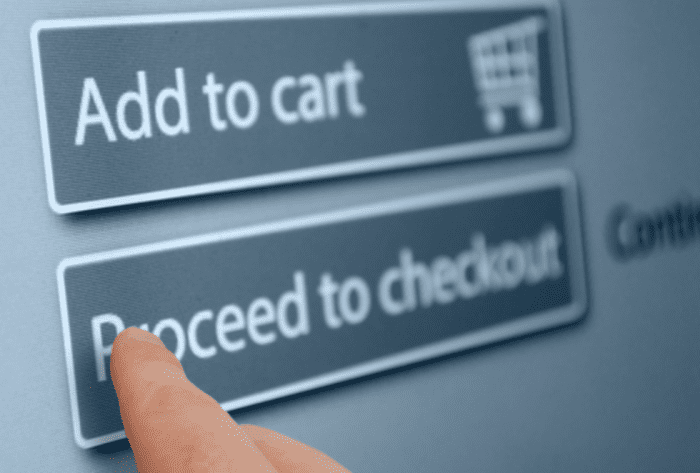Analysing your customers behaviour using buyer personas to improve your B2B E-commerce strategy
Is your B2B e-commerce strategy stagnating? If so, your buyer personas may be the weak link. A buyer persona is a semi-fictional representation of your ideal customer that’s created by studying demographics, attitudes and buying patterns. Detailed buyer personas guide everything from product development to marketing decisions, improving your business’s ability to identify, cultivate and convert the best leads into loyal customers. However, companies often get lazy about their buyer personas. When demographics steal the spotlight, businesses overlook the complex motivators, attitudes and behaviors that influence how individuals shop online.
The result: Your business wastes valuable resources investing in leads with a low probability for conversion, while missing out on higher utility leads.
The solution: build a smarter e-commerce strategy through an in-depth understanding of how buyer personas influence B2B purchasing behavior.
[Editor's note: Our Digital Experience toolkit provides several detailed examples of B2B Personas and an Excel template for creating your own pesonas]
How to Develop More Effective B2B Buyer Personas
Buyer personas are more than just a brief summary of your target customers. They are a fully developed, thoughtfully cultivated portfolio that helps you better understand your buyers’ needs, knowledge of your products and services, how your buyers consume media, which communication channels they prefer, who influences their buying decisions, and how they will respond to different messages. While most businesses develop B2B buyer personas, too many spend excess energy building the persona’s backstory and focusing on descriptive details that they miss the bigger picture.
Consequently, businesses end up with complex backstories that are better suited for actors developing a movie role than for businesses developing a base strategy and creative work. When developing buyer personas, businesses need to focus less on the personal habits of these personas and more on the motivating factors that influence how personas develop consensus, visualize objectives and manage professional obstacles.
In the age of e-commerce, how your personas behave online also matters. Recently, MasterCard identified five global online personas for e-commerce: passive users, proactive protectors, solely shoppers, open sharers and simply interactors. Rather than targeting a specific demographic based on the traditional markers of age, income and geography, MasterCard’s approach focuses solely on online behavior. “These personas are determined by behaviors, attitudes, and awareness regarding sharing personal information … essentially a new paradigm for merchants on the Internet,” says MasterCard. The implications for e-commerce are vast. Online retailers are best served when they build marketing campaigns based on shopper behavior, rather than demographic assumptions.
While MasterCard’s research focuses on B2C e-commerce, the same implication — that buyer behaviors, attitudes and awareness surrounding online shopping matter more than demographics — are just as applicable to B2B e-commerce. When building your buyer personas and analyzing customer behavior, be sure that they answer these important questions:
- How well does this buyer know your product/service? Is this a new product or an improvement on an existing product within the marketplace? When buyers do know your product or service, are they familiar with only limited features or sophisticated users?
- What impact does this product have on your buyer’s overall life? What points of impact does the product have? Does it save your buyer money or time, mitigate risk, or improve business outcomes?
- What media do your buyers consume and how does this consumption influence the decision making process? Will your buyers prefer to get to know you through social media, email or your company blog? Maybe your buyer checks Facebook, Twitter and Instagram on a daily basis and only checks into LinkedIn once per week. However, time on Facebook equates to low-quality interactions (the occasional status like) while time on LinkedIn is a higher quality interaction (reading multiple articles, messaging industry contacts, etc.).
- How early do they adopt new technologies? Early adoption and comfort with new technologies is especially important for e-commerce. If your buyers are used to a specific online shopping experience, like Amazon, they’ll expect the same ease of use for your website and may become frustrated if certain purchasing features are not offered.
Using B2B Buyer Personas in the Age of E-Commerce
Improving the online shopping experience for your clients starts with an in-depth understanding of what motivates these prospects to make a purchase, how prospective clients search for information and solutions, and what influencers play a role in the final decision. On average, B2B researchers conduct 12 sales prior to engaging with a specific brand’s site, with 73 percent of these searches originating from search engines. Once they find your website, businesses expect the same interactive, streamlined shopping experience that they are accustomed to receiving with B2C shopping. They don’t have time to waste searching for product information or comparing different solutions. When it’s time to buy, they want to confidently select a solution without wading through unnecessary or redundant information.
At the same time, B2B customers cannot simply click and buy as soon as they land on your website. The B2B buying cycle is now 20 percent longer than it was three year ago, according to Destination CRM. Why so long? Internal buying process complexity hampers efforts to streamline purchases. Nearly one out of every three B2B sales include at least five decision makers, and 70 percent include at least three decision makers. However, they’re not all in the C-suite: 81 percent of non-C-suiters report having a say in the decision making process. A better understanding of the motivators, attitudes and behaviors of these decision makers will improve your e-commerce strategy.
With B2B e-commerce predicted to top $12 trillion by 2020, every company is angling to maximize their share of the e-commerce pie. In order for your B2B website to be effective, it needs to meet multiple buyer needs, serving as both a sales tool to close the deal, and as an e-commerce site to simplify and streamline the purchasing process. By understanding what motivates and drives your target buyers, your business will be best positioned to capitalize on the booming e-commerce marketplace and customize your website to meet your buyers’ most pressing needs.
source http://www.smartinsights.com/persuasion-marketing/marketing-personas/analysing-your-customers-behaviour-to-improve-your-e-commerce-strategy/


 Thanks to
Thanks to
No comments:
Post a Comment